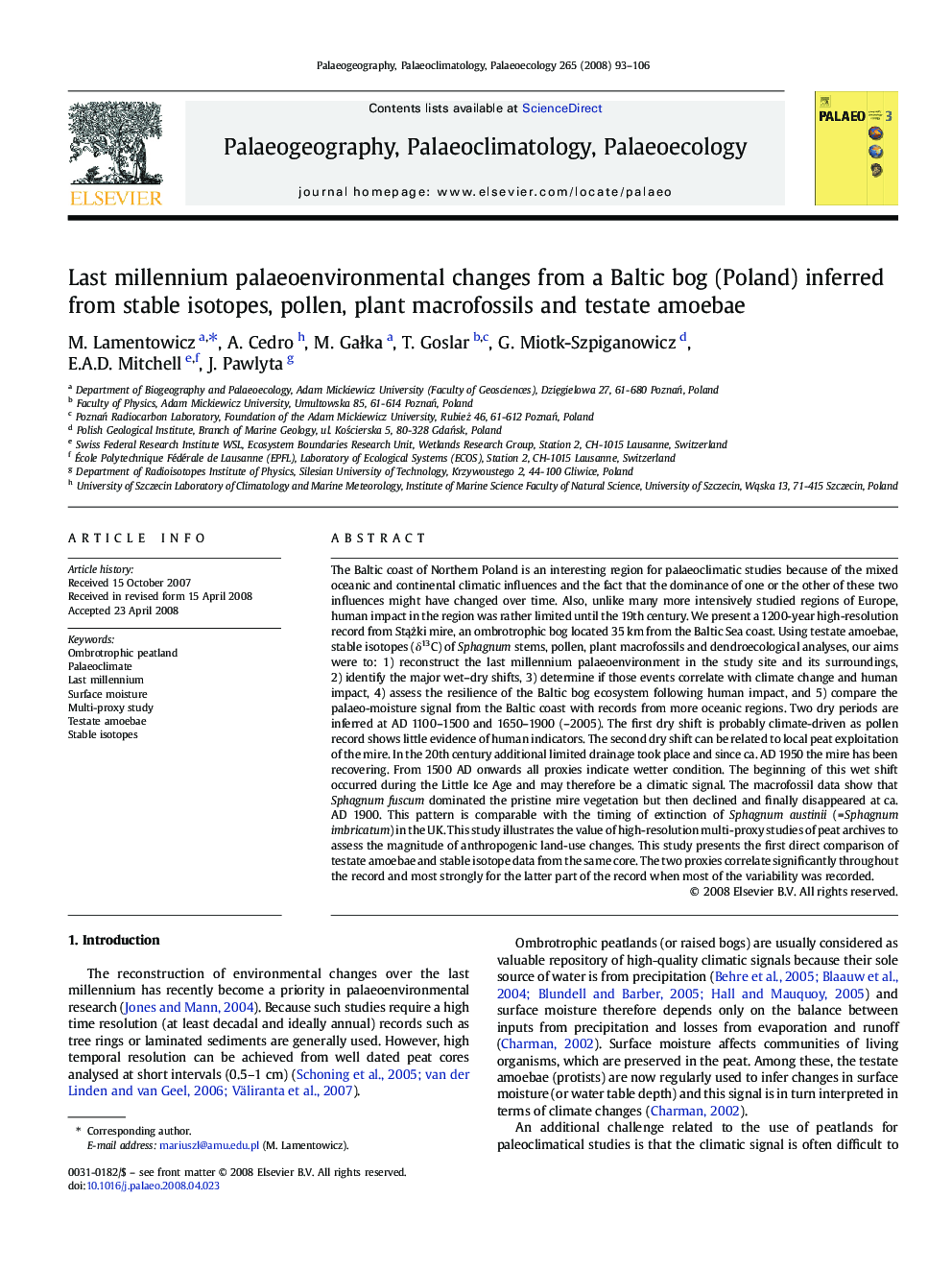| کد مقاله | کد نشریه | سال انتشار | مقاله انگلیسی | نسخه تمام متن |
|---|---|---|---|---|
| 4468545 | 1622324 | 2008 | 14 صفحه PDF | دانلود رایگان |

The Baltic coast of Northern Poland is an interesting region for palaeoclimatic studies because of the mixed oceanic and continental climatic influences and the fact that the dominance of one or the other of these two influences might have changed over time. Also, unlike many more intensively studied regions of Europe, human impact in the region was rather limited until the 19th century. We present a 1200-year high-resolution record from Stążki mire, an ombrotrophic bog located 35 km from the Baltic Sea coast. Using testate amoebae, stable isotopes (δ13C) of Sphagnum stems, pollen, plant macrofossils and dendroecological analyses, our aims were to: 1) reconstruct the last millennium palaeoenvironment in the study site and its surroundings, 2) identify the major wet–dry shifts, 3) determine if those events correlate with climate change and human impact, 4) assess the resilience of the Baltic bog ecosystem following human impact, and 5) compare the palaeo-moisture signal from the Baltic coast with records from more oceanic regions. Two dry periods are inferred at AD 1100–1500 and 1650–1900 (–2005). The first dry shift is probably climate-driven as pollen record shows little evidence of human indicators. The second dry shift can be related to local peat exploitation of the mire. In the 20th century additional limited drainage took place and since ca. AD 1950 the mire has been recovering. From 1500 AD onwards all proxies indicate wetter condition. The beginning of this wet shift occurred during the Little Ice Age and may therefore be a climatic signal. The macrofossil data show that Sphagnum fuscum dominated the pristine mire vegetation but then declined and finally disappeared at ca. AD 1900. This pattern is comparable with the timing of extinction of Sphagnum austinii (= Sphagnum imbricatum) in the UK. This study illustrates the value of high-resolution multi-proxy studies of peat archives to assess the magnitude of anthropogenic land-use changes. This study presents the first direct comparison of testate amoebae and stable isotope data from the same core. The two proxies correlate significantly throughout the record and most strongly for the latter part of the record when most of the variability was recorded.
Journal: Palaeogeography, Palaeoclimatology, Palaeoecology - Volume 265, Issues 1–2, 31 July 2008, Pages 93–106